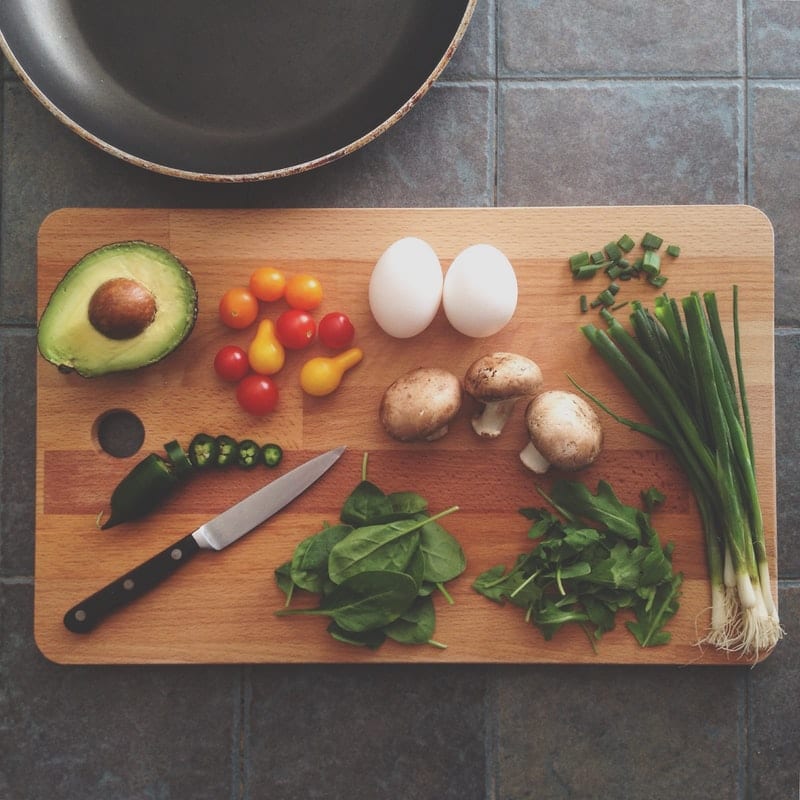Top Tips for Healthy Meal Prep
01/10/2019
Once a person has decided to begin eating healthier, they will almost instantly begin to face obstacles! The grocery store will always be full of convenient options that require very little cooking time, although these choices aren’t always the healthiest or even the most delicious.
In the following article, we will include some helpful tips and tricks that will make meal prep easy and fun, allowing your clients to develop their weekly health plans for tasty and nutritious meals.
Time-Saving Tips to Reduce Prep Time
Meal prepping is one of the most important parts of time efficiency for healthy eating. The important thing to understand is that saving a few hours at the beginning of the week to prepare the meals for the next week will save time and energy later.
Here are the 5 Top Food Preps tips for saving cooking times:
1. Plan Ahead.
The first thing you will need to do is design your routine. You will need to plan a menu, then do the shopping and perhaps schedule another day for the actual meal prep. Place these tasks in your calendar and set reminders.
Next, you will want to begin selecting your recipes. Some of your clients will be following a specific diet, and you can encourage them to look for recipes online or even buy a good cookbook. There are also popular food planning services like eMeals, which you can subscribe to for a complete plan for daily meals and a grocery list al by email.
Pro tip: Plan recipes around a single set of ingredients to save prep time and money.
Next, create a grocery list from the menu you have planned. Categorizing this list by aisles or departments can make the task a bit easier (e.g. deli, produce, meat/seafood, frozen foods, etc.)
Staples are those versatile ingredients used in many different recipes. These often have an especially good shelf life, so having a good stock on hand is always a good idea.
- Olive, coconut, or avocado oil
- Beans
- Oats
- Nuts
- Broth or stock
- Lentils
- Rice
Spices and flavorings
When you are planning your shopping, try to buy as much as you can in bulk. You will find lower costs and fresher produce at the local farmer’s market and wholesale outlets like COSTCO, Sam’s Club or BJ’s are good options for buying stapes and other needs in large cheaper quantities.
You will want to keep a good supply of fresh eggs on hand. Hard-boiled eggs are a protein-rich snack, and egg muffins can be baked ahead of time and eaten on the go.
Then, don’t forget the frozen veggies, fish, chicken breasts, and grains.
2. Organize your kitchen.
Disorganization in the kitchen is another cause for extended cooking times; here are some things to consider if disorder is a problem in your kitchen.
In addition to the dining room table and kitchen counters, you may find that an extra folding table provides some valuable extra space.
Get the containers you need. These Mason Jars everyone is talking about are not a bad idea for storing everything, soups, salads, or overnight oats. Also, do yourself a favor and buy a single set of matching containers, or you will spend considerable time looking for lids and planning the best storage in your fridge or freezer.
Ziploc bags are an excellent option for storing everything from smaller leftovers to large complete meals. If you want to go down this route, get yourself a good vacuum sealer to take this idea up a notch and keep things fresh and tasty. There are some more environmentally safe products to consider.
You will also need all the measuring spoons, cutting boards, and knives that are needed for proper food prep. If you are looking for a good, high-quality steel knife, consider getting yourself one of the many Kamikoto knives to aid your cooking. Remember to use a different cutting board for the fresh produce than the one you use for fish and meat.
Organize your pantry with proper storage containers. You will find it is much easier to scoop your grains from a canister than to try pouring them from their plastic bags. This will also make your pantry appear more organized.
3. Purchase Pre-Cut Produce.
This doesn’t save cash, but because veggies are an essential part of the diet, if the client will not have to do the chopping slicing and to dice themselves, they may be more inclined to eat healthier.
Pre-cut veggies also come in individual packages with proper serving sizes, which adds more convenience to the cooking arrangement.
4. Batch Cooking.
Lentils, quinoa, rice, and oats can be cooked in large quantities and frozen in single meal sizes for use with meals as needed. This same idea can apply to bone broths, marinades, and other sauces. Freeze them in ice cubes to be quickly added to a fresh-cooked meal.
Even veggies can be pre-roasted and used in future meals. Some vegetables that roast and reheat especially well include asparagus, beets, carrots, onions, winter squash, parsnips, and other tubers.
Bonus Tip: roasted veggies reheat well and keep their great textures and flavors.
Rather than purchasing your pre-cooked chicken, boil, roast or BBQ your own. This will save cash and allow you to know exactly what’s in your chicken breast.
Finally, don’t forget the value of the high-protein snack: hard-boiled eggs. Boil these a dozen at a time and eat them throughout the week.
5. Shop Online.
Finally, this last tip is a real-time and cash saver. There are services like InstaCart and Clicklist that allow you to make a purchase and have them delivered. Make sure you are always working from a shopping list that considers the needs of your pantry and does not waste cash on surplus.